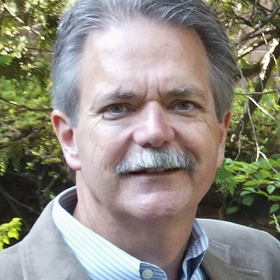
The end objective is a better health care delivery model with an alignment of “enlightened self-interests” and a balance between rewards and value for the employer, employee, and provider……..
“EP209: Primary Care Is an Investment. The Rest of Health Care Is a Payment, With Jed Constantz, DBA”
by Stacey Richter
EP209: Primary Care Is an Investment. The Rest of Health Care Is a Payment, With Jed Constantz, DBA
January 3, 2019
Podcast: Download
Recent studies have come out suggesting that millennials are forgoing primary care and just going directly to specialists. I contend that the reason for this might be the state of primary care at this juncture. Time is a precious commodity. Why bother with an inconvenient doctor appointment that isn’t perceived to be worth the time invested? It’s frequently the case that fee-for-service-compensated primary care providers (PCPs) are being directed or incented to do things incongruent with their charge to direct and quarterback care, to spend the time to listen, to advise, to prevent. As has been said many times on this podcast, transformation requires a change in the economic models. Today, I speak with Dr. Jed Constantz, an expert in how to go about transforming primary care.
You can learn more by visiting Dr. Constantz on his LinkedIn page.
As a health care finance and delivery strategic consultant, Jed Constantz, DBA, ensures existing and prospective clients receive maximum value from current and future strategies and initiatives. In previous roles, Dr. Constantz advised employers on measures to develop regional and community-based physician accountability and commitment through means of enhanced benefits and reduced costs, with the significant benefit of creating sustained loyalty between providers, patients, and payers. He has successfully offered strategies that built on 4 pillars: actionable data, physician alignment, high-risk member targeting, and network reengineering.
Having begun his career on the payer side of health care (Blue Cross/Blue Shield of Central New York), Dr. Constantz has served in several positions for hospitals, home health agencies, physician organizations, and physician/hospital organizations. Over his 30-plus years in health care, Dr. Constantz has developed tools and resources for PCPs and employers seeking to reduce costs, drive greater efficiency and quality outcomes, and thereby create a “featured and favored” network in their regions and community. This process includes a deep focus on the selection of the right community of primary care physicians and specialists, a thorough audit of existing patient and population data, commitment to accountable care standards, and improved compensation for the physician.
The end objective is a better health care delivery model with an alignment of “enlightened self-interests” and a balance between rewards and value for the employer, employee, and provider. For the employer, the financial benefits are immediate with ongoing health care savings, a healthy workforce, and improved physician relationships. The provider can see greater patient volumes, improved care standards, and compensation tied to performance. The employee will feel an improvement in care and attention, benefit with reduced out-of-pocket expenses, and sense a higher level of satisfaction.
01:30 Patient-centered medical homes (PCMHs).
02:28 “What continues to be an issue today is the way primary care gets paid.”
04:08 “The practice gets paid nothing unless the physician is face-to-face with a patient … Often, [that’s not the] team member that needs to be face-to-face with the patient.”
07:41 “Services … can be more efficient if cash flow [is taken into consideration].”
10:08 The National Alliance’s guidance to buy—the payment model being recommended.
12:12 Looking at the claims data and preventing downstream spend.
14:15 “When your care delivery is better aligned with the needs of the covered individual, you are genuinely addressing their chronic condition needs.”
14:30 The other reason why payment reform is so important.
15:48 “There is a gap in understanding … what true preventive care is.”
15:58 “True preventive care is more … a conversation than it is an examination.”
18:29 The advanced PCP payment models and the nuances behind these models.
19:47 “These deliverables should be guaranteed for the entire population.”
20:02 “The future value of primary care also is an invitation to redefine what you buy from primary care.”
23:13 The long-term vs short-term benefits.
24:48 Dr. Constantz’s advice on how to “deliver the goods.”
25:47 “Where is the physician in this conversation?”
26:12 Staffing model—“Do they have the right care team?”
26:25 Practice-level technology.
27:06 “What is the practice’s continuous quality improvement commitment to ongoing staff training and development?”
28:39 How hospitals are challenged by this model.
29:10 “It’s not a matter of how much revenue they generate. It is a matter … of how much margin they generate.”
You can learn more by visiting Dr. Constantz on his LinkedIn page.
Please subscribe if you enjoyed the episode. Also, consider leaving a rating and review on any of the online players so we can continue to improve our offerings. Thank you for your help.

